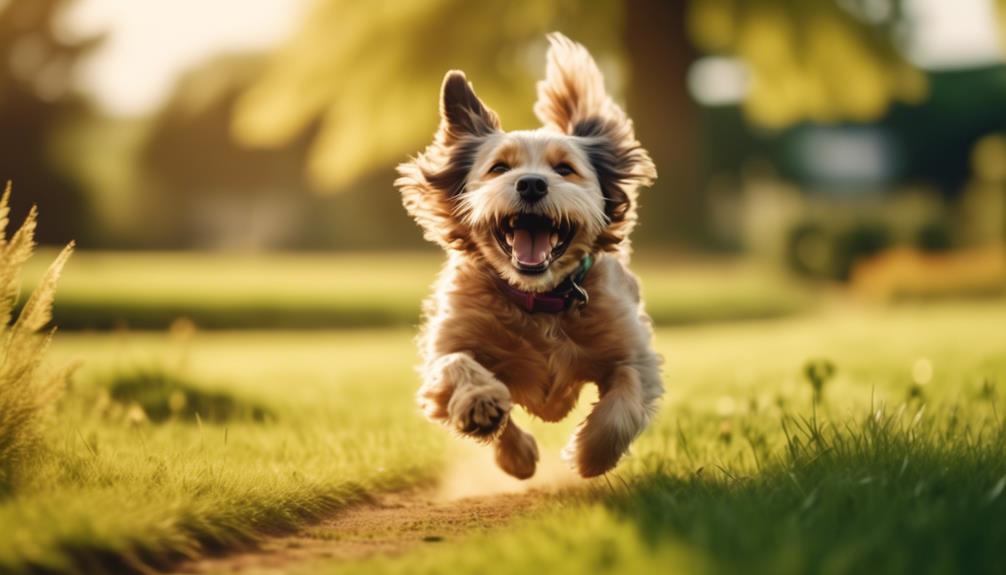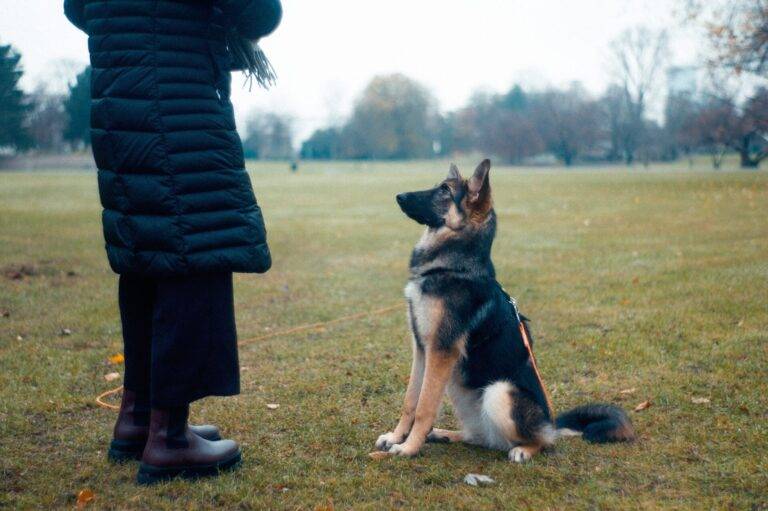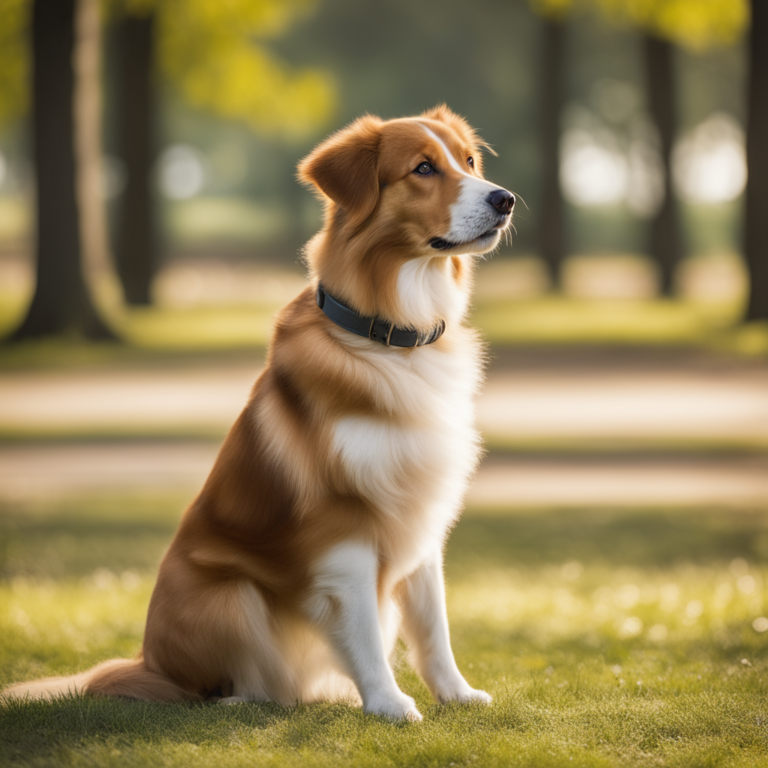Best Detailed How Do I Train My Dog To Come When Called Guide

How Do I Train My Dog To Come When Called: When you call your dog, you expect them to come bounding towards you with unwavering enthusiasm. But instead, they give you a casual glance and continue on their merry way. Frustrating, isn’t it? Well, fear not, because there are effective ways to train your dog to come when called. In this discussion, we will explore the steps you need to take, the common mistakes to avoid, and some troubleshooting tips to ensure that your furry friend responds to your call every time.
Preparing for Recall Training
To prepare for recall training, you need to identify your dog’s motivation to respond to a recall cue and choose a suitable training location. Recall training is essential for the safety and well-being of your dog. It teaches them to come back to you when called, even in distracting or potentially dangerous situations.
First, let’s talk about your dog’s motivation. Every dog is unique, so it’s important to understand what motivates them. Some dogs are food-motivated, while others may respond better to toys or praise. By identifying what motivates your dog, you can use that as a reward during training. This will make the recall cue more appealing to them, increasing their willingness to respond.
Next, choose a suitable training location. Start in a quiet, familiar area with minimal distractions. As your dog becomes more reliable with the recall cue, you can gradually increase the level of difficulty by training in more distracting environments. However, it’s crucial to start in an environment where your dog can focus and succeed.
To teach the recall cue, start by conditioning it with a reward. Associate the recall cue, such as “come” or “here,” with something your dog finds rewarding, like a tasty treat or a favorite toy. Repeat this step multiple times over several days to build a strong association between the cue and the reward.
Once your dog understands the recall cue, you can start building the recall by hiding in an accessible spot and calling them to come find you. When they successfully locate you, reward them generously to reinforce the behavior. This game of hide-and-seek will make coming to you an exciting and rewarding experience for your dog.
Conditioning the Recall Cue
Now that you have chosen a suitable training location and identified your dog’s motivation, it’s time to focus on conditioning the recall cue. Teaching your dog to come when called is a crucial aspect of dog training, and having a reliable recall can ensure their safety and your peace of mind. The key to a successful recall is positive reinforcement training and conditioning.
To condition the recall cue, you need to associate it with a reward. Choose a word or phrase, such as “come” or “here,” that you will consistently use as the recall cue. Start by saying the cue word and immediately rewarding your dog with something they find highly motivating, like a treat or a favorite toy. Repeat this step multiple times over multiple days to strengthen the association between the recall cue and the reward.
Another effective technique is to build the recall by hiding in an accessible spot and calling your dog to come find you. When they successfully locate you, reward them with praise and a treat. This exercise helps reinforce their understanding of the recall cue while adding an element of fun to the training process.
During recall training, it’s important to troubleshoot any challenges that may arise. Avoid using your dog’s name as the recall cue, as they may become desensitized to it over time. Instead, use a separate word or phrase specifically for recall. Additionally, make sure to let your dog come all the way to you before giving them the reward. This helps reinforce the behavior of coming when called.
If your dog is not responding to the recall cue, try experimenting with different motivators. Some dogs may be more motivated by food, while others might respond better to play or praise. Tailor the rewards to your dog’s preferences to make the training more effective.
Remember, conditioning the recall cue takes time and patience. Start in a secure outdoor space and gradually increase the distance between you and your dog. This helps build their confidence and ensures a reliable recall in various environments.
To aid in the training process, consider using helpful supplies such as an aluminum whistle, which can create a distinct sound that your dog associates with coming when called. A long lead can also be useful for practicing recall in open areas while maintaining control. Lastly, find a motivator that your dog finds irresistible, whether it’s a special toy or a high-value treat, to enhance their motivation to come when called.
Building the Recall
You can start building the recall by incorporating fun and engaging activities into your training sessions. Begin by attaching a long lead to your dog’s leash, allowing them some freedom to explore while still maintaining control. Choose a secure outdoor location, like a fenced-in yard or a quiet park, where you can practice the recall without distractions or safety concerns.
To start, use the verbal cue you have conditioned in the previous step, such as “come” or “here.” Make sure to use a clear and enthusiastic tone to get your dog’s attention. Begin by standing a short distance away from your dog and calling them using a verbal cue. When they come to you, reward them with praise, treats, or their favorite toy. Repeat this process multiple times over several training sessions to reinforce the behavior.
As your dog becomes more comfortable with the recall, you can increase the distance between you and your dog. Begin by hiding behind a tree or a bush and using the verbal cue to call them to find you. When they successfully locate you, reward them with praise and treats. This activity not only strengthens the recall but also provides mental stimulation for your dog.
Gradually increase the distance and difficulty level of your hiding spots to challenge your dog and keep the training sessions exciting. Remember to always reward your dog for coming when called, even if they take longer than expected. This positive reinforcement will help build a strong recall and reinforce the importance of responding to your cue.
Practicing in a Secure Outdoor Space
To practice recall in a secure outdoor space, consider using a fenced yard, leash-free training areas, or secure dog parks. These locations provide a controlled environment where you can work on training without distractions or potential hazards. Whether you have access to a private space or a designated training area, these options offer the freedom for your dog to roam while still maintaining control and reinforcing reliable recall.
Fenced Yards for Practice
Practicing recall in a secure outdoor space can be made easier and safer by utilizing a fenced yard. This allows you to create a controlled environment where you can focus on teaching your dog to come when called. Fenced yards are the best dog training areas because they provide the necessary security and prevent distractions. Start your training sessions in a low-distraction area within the fenced yard, gradually increasing the distance between you and your dog.
Use a clear verbal cue, such as “come,” and reward your dog with treats or praise when they respond correctly. As your dog becomes more reliable in their recall, you can introduce distractions into the fenced yard to test their response. Additionally, using a long lead can help you practice recall in different areas of the yard, further enhancing your dog’s response and reliability.
Leash-Free Training Areas
To further enhance your dog’s recall training and progress to off-leash practice, it is important to find a secure outdoor space where you can safely practice without distractions. This will allow you to gradually increase the distance between you and your dog, teaching them to come when called even when they are far away.
One way to do this is by using a long lead, which gives your dog the freedom to explore while still keeping them under control. Make sure to have a motivator specific to your dog, such as training treats or a favorite toy, to aid in their recall training. Practicing in a secure outdoor space is crucial to avoid dangerous situations and ensure that your dog remains safe when off-leash.
Secure Dog Parks
Secure dog parks offer a controlled and safe environment for recall training, allowing you to practice off-leash commands and reinforce your dog’s response to the recall command. Training in a secure outdoor space provides the perfect setting to teach a dog to come when called.
In these parks, you can gradually increase the distance between you and your dog while practicing the verbal cue “come.” The enclosed space eliminates the risk of your dog running off and ensures their safety. Additionally, the absence of distractions in secure dog parks allows you to focus solely on training and troubleshooting any challenges that may arise during the process. By utilizing a secure dog park, you can reward your dog for their successful recall responses and build a reliable recall command.
Real-World Recall Practice
To effectively train your dog to come when called, it is crucial to practice real-world recall scenarios in a secure outdoor space. This step is vital because it allows you to simulate the types of situations where your dog’s recall is most needed. Start by using a long lead and a motivator that your dog finds enticing, such as a favorite toy or treat, to condition the recall cue. This will help your dog associate the recall command with a positive reward.
Begin practicing recall in a secure outdoor space, gradually increasing the distance between you and your dog. Start with shorter distances and slowly build up to longer ones. Be patient and consistent during this process. Remember to use a clear and distinct recall cue, such as your dog’s name followed by the command “come.” Avoid using your dog’s name as the recall cue alone, as it may confuse them when you call their name in other situations.
Troubleshoot common problems that may arise during recall training. For instance, make sure to reward your dog only when they have come all the way to you, instead of rewarding them halfway. This will reinforce the behavior of coming all the way when called. Additionally, ensure that you establish trust and clear communication with your dog throughout the training process.
As your dog becomes more proficient in recalling in a secure outdoor space, gradually introduce distractions. Practice recall in the presence of other dogs, people, or enticing smells. This will help your dog learn to focus on you and come when called, even in the face of distractions.
Lastly, as your dog’s recall improves, start decreasing the use of treats and rewards while maintaining a strong recall response. This will help ensure that your dog comes when called, not just for the promise of a reward, but because they trust and respect you as their leader.
Troubleshooting Common Recall Issues
If you’re having trouble with distractions during recall training, focus on gradually increasing the level of distractions to build your dog’s focus and responsiveness. Using positive reinforcement techniques, such as high-value treats and rewards, can motivate your dog to come consistently and reliably. It’s important to maintain consistent training to reinforce the recall behavior and ensure your dog understands and responds to the cue in various situations.
Distractions: Handling Distractions
When training your dog to come when called, it is important to address common recall issues, such as handling distractions. Dogs can easily get distracted outside, so using a long leash can be a means to practice recall in different environments. If your dog only comes when it wants to, incorporating games and play into training sessions can make the recall more enticing.
For dogs that become fearful or anxious when called, teaching them to come from a distance can help build their confidence. If your dog doesn’t understand the verbal cue, it is important to practice recall with multiple distractions present to reinforce the behavior. And always make sure to reward your dog when it comes to you, as positive reinforcement is key in training.
Reinforcement: Positive Reinforcement Techniques
Using positive reinforcement techniques is essential for troubleshooting common recall issues when training your dog to come when called. Instead of using your dog’s name as the recall cue, try using a distinct word or sound that your dog can associate with coming to you.
Start training the “come” command in a quiet, distraction-free environment. Say the cue word and reward your dog with treats and praise when they come to you. Gradually increase the distance between you and your dog, always rewarding them for coming when called. It’s important to ensure that your dog comes all the way to you before giving them the reward. If your dog resists the recall cue or encounters difficulties, consult a veterinarian or professional dog trainer for guidance. Remember, positive reinforcement techniques can strengthen the bond between you and your dog while helping them learn to come when called.
Consistency: Maintaining Consistent Training
To troubleshoot common recall issues when training your dog to come when called, it is crucial to maintain consistent training techniques and cues throughout all interactions with your dog. Consistency is key in teaching recall to your dog. Make sure that all family members and anyone interacting with your dog uses the same recall cue and technique.
This will help your dog understand and respond to the cue more effectively. Additionally, keeping your dog motivated and engaged during training is important. Consistently reward your dog with treats, praise, or play every time they come to you when called. This reinforces the behavior and encourages them to continue responding to the recall cue. Remember to repeat steps and consistently practice recall in different environments and situations to ensure a reliable response from your dog. If you’re facing difficulties, consider seeking guidance from a professional dog trainer or behaviorist for personalized assistance.
Building a Stronger Bond Through Recall Training
By incorporating recall training into your dog’s routine, you can strengthen your bond and improve their responsiveness to come when called. Recall training is an essential part of building a stronger relationship with your furry friend. It not only ensures their safety but also enhances the trust and connection between you and your dog.
To begin building a stronger bond through recall training, start by using positive reinforcement. Reward your dog with treats, praise, and affection every time they come to you when called. This positive association will make them more eager to respond to your command. Consistency is key here. Make sure to practice recall training regularly, using the same command and rewards each time.
Another way to strengthen the bond with your dog during recall training is to make it a fun and engaging experience. Use toys or games to motivate them and make coming to you a rewarding activity. Incorporate playtime and interactive exercises into the training sessions to make it enjoyable for both of you.
Additionally, make sure to keep the training sessions short and focused. Dogs have short attention spans, so it’s important to keep them engaged and interested. Break the training into smaller sessions throughout the day to keep your dog’s enthusiasm high.
Additional Resources for Training Come When Called
Explore a wide range of resources to enhance your recall training journey and strengthen the bond with your dog. When it comes to training your dog to come when called, it’s important to gather as much information as possible to ensure success. There are several resources available to help you understand the techniques, troubleshoot challenges, and make training engaging and fun for your furry friend.
Start your training by utilizing dog training courses, books, and online tutorials. These resources provide step-by-step instructions on recall training, giving you the knowledge you need to effectively teach your dog to come every time you call. They also offer troubleshooting tips for common challenges, such as distractions or lack of motivation.
In addition to educational resources, seek advice from professional dog trainers or veterinarians. They can provide insights into why your dog may be resisting recall cues and offer personalized recommendations based on your dog’s specific needs. Their expertise can help you overcome any training hurdles and strengthen your bond with your dog.
To provide a means for effective recall training, consider using training aids and tools. Long leads can give your dog the freedom to explore while still allowing you to maintain control during training sessions. Clickers can be used as a signal to reinforce the recall command, while high-value treats serve as a reward for coming when called. These tools promote positive associations with the recall command and make training more enjoyable for your dog.
For additional resources, look into specialized recall training products, featured training treats, and expert input on training methods. These resources can enhance your recall training journey by offering new techniques or products to try. Whether it’s a specialized recall whistle or a training treat designed to capture your dog’s attention, exploring these resources can provide you with the tools you need to train your dog to come when called.
How Do I Train My Dog To Come When Called Frequently Asked Questions
What Do You Do When Your Dog Doesn’t Come When Called?
When your dog doesn’t come when called, try using positive reinforcement techniques to encourage them. Build a strong bond and trust with your dog, teach them a specific recall cue, and avoid common training mistakes. If needed, seek professional help for severe recall issues.
How Long Does It Take to Train a Dog to Come When Called?
To train your dog to come when called, it can take a few weeks to several months. Consistent training, positive reinforcement, and addressing challenges are key. Building a strong bond and seeking professional guidance can speed up the process.
Should You Punish Your Dog for Not Coming When Called?
You should not punish your dog for not coming when called. Instead, focus on positive reinforcement techniques, building trust, using treats effectively, and being consistent. Avoid common mistakes and try different training methods if needed. Consider seeking professional help for stubborn recall issues.
How Do You Fix a Dog That Ignores the Recall?
To fix a dog that ignores the recall, use training techniques that focus on building trust and reinforcing positive behavior. Use treats as rewards, practice in different environments, and seek professional help if needed. Consistency in training methods is key.
Conclusion
In conclusion, training your dog to come when called is a vital skill that can enhance their safety and strengthen your bond. By following the steps outlined in this article, such as identifying your dog’s motivation, choosing a suitable training location, and gradually increasing distance, you can successfully teach your dog to respond to the recall cue. Remember to avoid common mistakes and seek professional help if needed. With consistent practice and patience, you can achieve a reliable recall with your furry companion.








